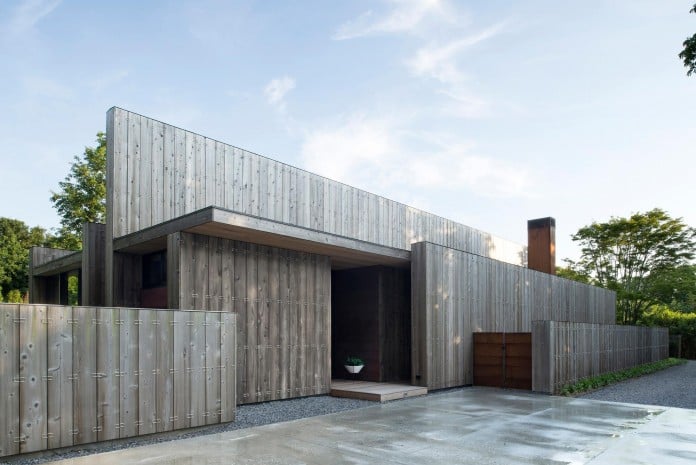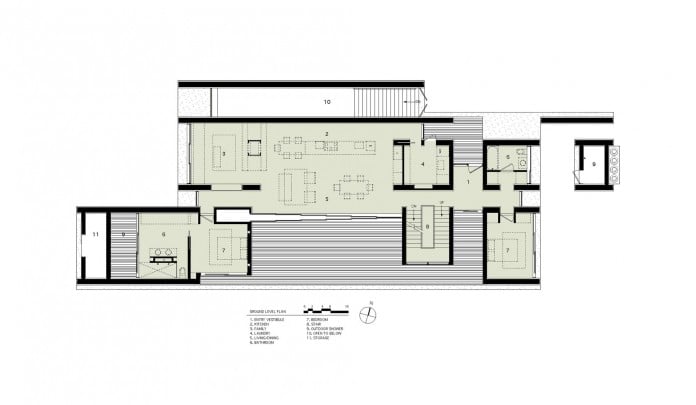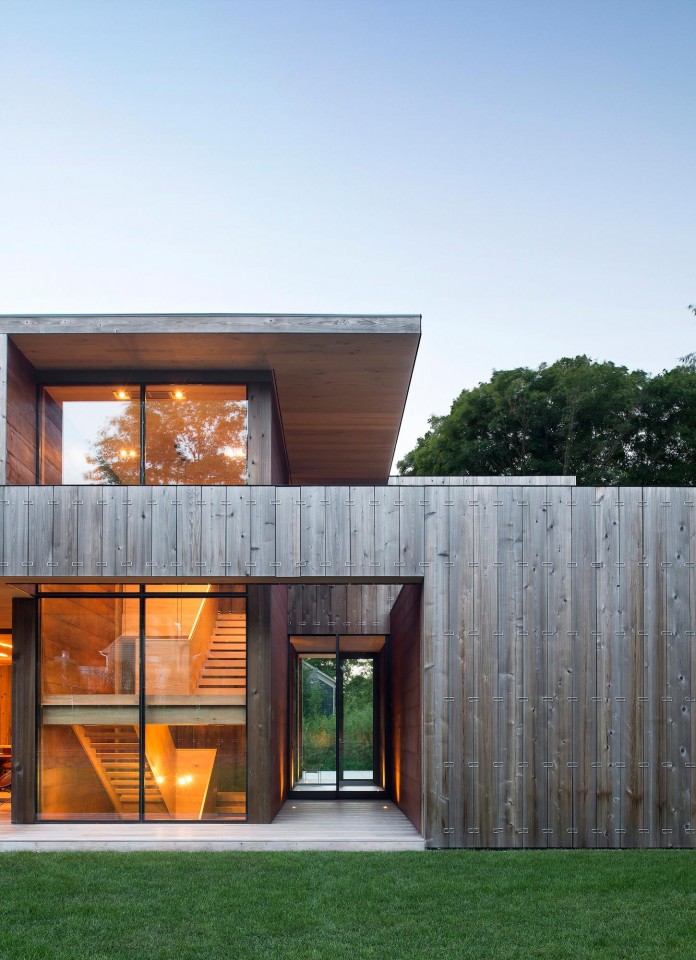Elizabeth II Residence in Amagansett by Bates Masi Architects
Architects: Bates Masi Architects
Location: Amagansett, New York, USA
Year: 2014
Photo courtesy: Bates Masi Architects
Description:
Over and over again, structural engineering focuses on the visual sense, with little respect for alternate resources of discernment. The area of this house, in the heart of a clamoring resort town, requested extraordinary thought of the acoustic sense. Research in compositional acoustics drove the structure, materials, and point of interest of the house, not just protecting the property from the sound of the town, additionally controlling inside subtle elements to make an one of a kind acoustic character for the house, one that will ingrain enduring recollections for the family and their visitors.
The house is involved a progression of parallel dividers that give layers of security and protection from the sound of the town. The dividers extend past the living spaces and climb in tallness, building from a human-scale divider at the section to a high divider along the focal point of the house. The dividers diffract the sound waves moving past them, throwing an acoustic shadow over the property to make a calm open air gathering range.
The dividers are manufactured with protected solid structures, a divider gathering about 20″ thick included a poured solid center that is ceaseless from balance to rooftop, wrapped in protecting froth that likewise serves as formwork amid development. These dividers give amazing warm protection and a to a great degree low solid transmission coefficient. Because of the quality of their solid centers, the dividers go about as auxiliary pillars, empowering them to compass over the social affair space at the focal point of the house and the secured deck.
The custom stainless steel cuts that join the wide cedar board siding to the dividers were intended to draw out the life of the siding. Customary wood siding inevitably comes up short in light of the fact that the normal extension and withdrawal of the wood is tightened by the screws or nails that inflexibly affix it set up, gradually hauling out the latches or part the wood. The spring-like clasps, be that as it may, hold the sheets in strain against the house while permitting opportunity for the regular development of the wood.
Inside, minor departure from the clasps are used as robe snares, bureau pulls, and as pivots for a movable sound confuse in the focal social event space. The pivots hang cedar sheets before a felt board with spaces between them. Sound waves go through the holes between the sheets, are caught behind them, and consumed by the felt.
The pivots permit the separating of the sheets to be balanced so the room can be acoustically tuned for personal social events or clamorous gatherings. The stair is likewise tuned to make an unobtrusive acoustic ordeal. The stair treads decrease in thickness, changing the pitch of footfalls as one rises from the wood shop in the storm cellar, past the principle floor with open spaces, visitor room, and main room, up to the children’s rooms on the upper floor.
The examination of sound and how it influences our view of space educated the points of interest, materials, and type of the venture. This way to deal with the configuration prompted a wealthier and more important home for the crew.










Thank you for reading this article!












